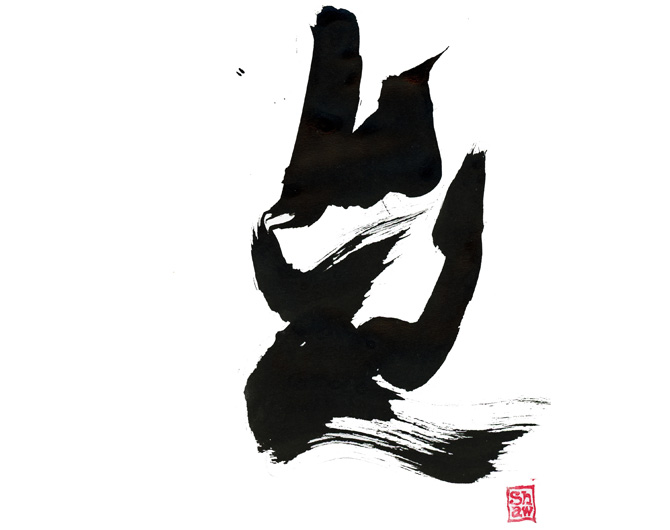The Scott Shaw Blog
Be Positive

Be Positive

For anyone who had the privilege of studying a traditional form of the martial arts under the direction of an Asian-born instructor who came to the West directly from the country where that system of self-defense had its origin, you will understand that what is taught to the students directly under the guidance of an instructor with that foundation is quite different from what a student learns who is taught by a second or a third or a fourth generation teacher, of Western origins, that came to learn the art in some other country than where it originated. This is not necessary to say that these instructors are lesser practitioners of the art. What it does imply, however, is that something is lost with each generation of practitioners who has not studied their system of self-defense directly from a teacher who was trained in the country of its origin.
For those of us who have been lucky enough to train with teachers who were the first-generation instructors of the Korean martial arts, it is very easy to see the difference between how we were taught and how the newer students are now instructed. Not only have the arts evolved, which some would claim is a very good thing, but business models have largely come into play, causing much of the true origins of the arts to be convoluted with the need to make as much money as possible.
I must be clear at this point of this discussion, I am not saying that all of the teachers who moved to the West were and are honest and true individuals. Many of the first-generation students of, particularly the Korean martial arts, have found this out the hard way. Myself included. What I am saying is that there is a direct link to the deeper truths and understandings that are possessed by the people who have studied a system of martial arts directly at its point of origin than those who have only studied from an instructor who is more distantly removed from the origin of the art.
More than simply the fact that there have been many a student who was allowed to study under the guidance of these direct practitioners of the art, the fact that is missed by so many is how many of these instructors have been completely forgotten by the hands of time?
If you look to the list of immigrant-instructors of the martial arts in the United States, for example, you will see that the wider formalized teaching to Western students began to rapidly grow in the late 1940s and into the 1950s. This was first formalized by the partitioners of particularly Judo and then later Karate. By the 1960s, instructors of the then newly developed Korean martial arts began to immigrate to the United States and open up schools of self-defense. For a time, by the 1970s and into the 1980s, there was a vast number of instructors opening schools and teaching the Korean martial arts. Where have all of these instructors gone?
Certainly, as time progresses, people become older and cannot perform the physical activities of their youth as well as they once did. Others, simply passed away. Some were driven away from teaching by a changing economic landscape. But, the fact of the matter is, think about the number of instructors, who were considered to be very good, advanced practitioners of the various arts, that have all but been forgotten. There was never a newspaper or magazine article written about them. They never appeared on TV. All they did was to teach a group of students who were allowed to learn valuable life lessons from their teacher. But, now their teacher is gone. Forgotten by history.
I know from my personal perspective, some of my teachers, that I consider to be a true influence to the martial artists I became, have been completely forgotten. Look for information about them on the internet, and there is none. Yet, once upon a time, they were a respected practitioner of the art. They were invited to all of the events the advanced practitioners attended. They were at the forefront of spreading their system of marital arts to the wider audience across the globe. Now, they are forgotten.
From one perspective, being forgotten by the larger masses is not such a bad thing. They achieved what they set out to do and that was to teach as many students as possible their system of self-defense. For each of those students, and those who became instructors under their direction, their legacy lives on. On the other hand, however, I believe it is essential that we never forget those practitioners who laid the foundations for the modern martial arts. Though their name may be lost to the hands of time, what they provided, to the ever-evolving landscape of the martial arts, should never be forgotten.